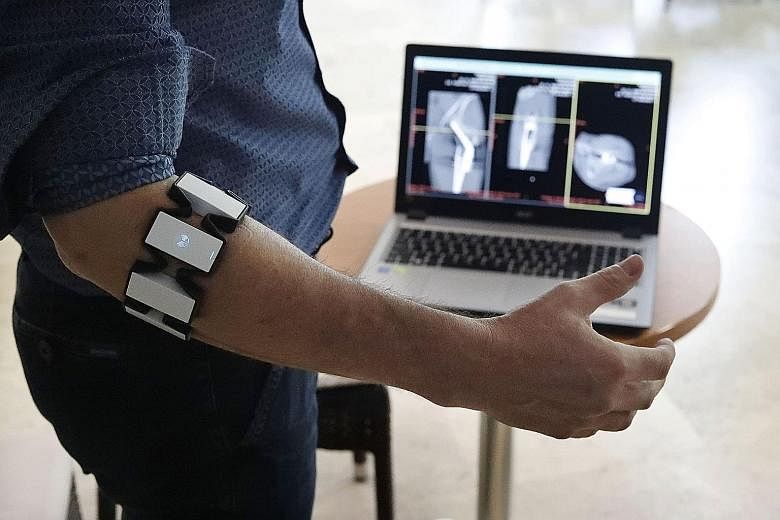SLOVENIA • Surgeons have one of the most demanding jobs in the world, and they deal with stressful situations daily.
One involves verifying a patient's X-rays while operating. Normally, this means leaving the sterile environment of the operating room, losing vital time and increasing the risk of infection.
In Slovenia, a company called Adora Med has developed an interactive assistant to make a surgeon's work easier while improving patient care.
The Adora Assistant allows for contact-free viewing of a patient's scans during a surgical procedure and inside the sterile environment of the operating room, thanks to gesture-based software.
A surgeon downloads the patient's scans into a computer and accesses them using an electromagnetic Bluetooth bracelet attached to his or her arm.
The bracelet's sensors respond to the surgeon's instructions via hand gestures: clenching a fist, spreading the fingers, moving a hand to the left, right or upwards.
"Adora Assistant is an advanced and promising tool for surgeons to remote-handle multi-slice images (MRI and CT scans) during complex orthopaedic operations. It has already helped me perform dozens of complicated procedures," said Dr Jyrki Nieminen, a surgeon from Coxa, the biggest orthopaedic hospital in Finland.
Studies by the Maribor Medical Centre, Slovenia, show that the use of the Adora Assistant and other similar interactive systems reduce surgery time by up to 20 per cent.
Several other companies around the world have expressed the need for such a device, said Adora Med's business development manager, Mr Damjan Rotar.
A surgeon can learn how to use it in just a few hours. Other systems for gesture recognition are more complicated, generally using cameras and limiting the surgeon's mobility, since he or she needs to be within the camera's visual field the entire time, said Mr Rotar.

